At the foot of Mount Medvednica, on a plain overlooking the Sava River, lies Zagreb, Croatia's vibrant capital city. The city boasts a charming medieval old town with some impressive 18th- and 19th-century Austro-Hungarian architecture and lovely cafe-lined cobbled streets. While the Upper Town is the site of the Gothic, twin-spired Zagreb Cathedral and the 13th-century St. Mark's Church, the Lower Town area contains the city's main square as well as some excellent shops, parks, galleries and more museums per square foot than any other city in the world. When it comes to drinking and dining, visitors are spoiled for choice with the area's ever-increasing amount of chic bars and top-class restaurants.



Ljubljana, Slovenia's capital and largest city, is set on the magnificent Ljubljanica River that gently meanders through the Old Town, providing a picturesque backdrop to the quaint cafes and tempting restaurants that line the banks. This tranquil setting belies a dynamic and fast-growing capital packed with compelling sights and a lively nightlife bolstered by its vibrant student population. Ljubljana is known for its many fascinating museums. These include the National Museum of Slovenia, displaying historical exhibitions, and the Museum of Modern Art, home to 20th-century Slovene paintings and sculptures. While seminal Slovenian architect Joze Plecnik shaped the city’s overall appearance, Ljubljana has also been heavily influenced by the Hungarians, Austrians and Italians. These eclectic influences permeate many aspects of city life, including its food, drink and its myriad architectural styles.



One of the most picture-perfect towns in the Mediterranean, the Croatian fishing port of Rovinj, is idyllically set on the west coast of the Istrian Peninsula. This charming destination features heritage architecture, blue flag beaches and incredible natural surrounds. The beautiful Baroque-period Church of St. Euphemia with its bell tower is without a doubt one of the most popular attractions in Rovinj. Cobblestoned streets lead visitors on a journey of discovery through labyrinthine alleyways, while the picturesque islands of the Rovinj Archipelago dotting the coast provide ample opportunity for the more adventurous to explore these ‘outstanding scenic wonders’. Don’t miss a visit to Lone Bay, a popular pebble-strewn beach situated just south of the town. Explore the Old Town, cycle along the coast, scuba dive the wreck of the Baron Gautsch or sample traditional cuisine at one of the many romantic dining options.
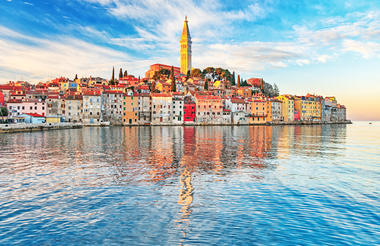
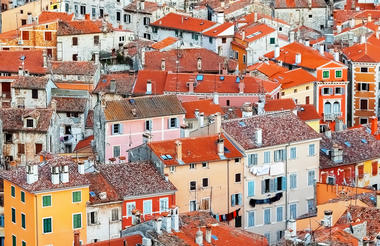
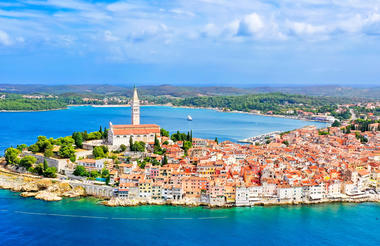
Set in south-central Croatia, Rakovica is the name of the municipality and a small picturesque village which is known for its idyllic position. It serves as the gateway to the breathtakingly beautiful Plitvice Lakes and provides an excellent base for visitors to explore the incredible natural surrounds featuring lush forests, rushing rivers, and hidden caves. The undeniable highlight of the area is the nearby Plitvice Lakes National Park, a UNESCO World Heritage site which is one of the oldest and the largest national parks in Croatia. The park is world famous for its network of 16 magnificent crystalline lakes which cascade into each other via waterfalls and its unique mountainous karst formations. Visitors can also look forward to viewing the stalactites and stalagmites of the impressive Caves of Barac. Other popular activities include: horse riding, quad biking and mountain biking.
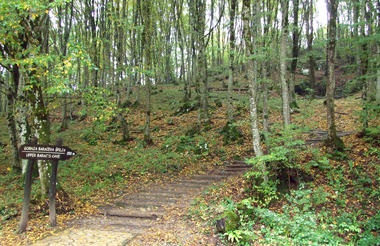
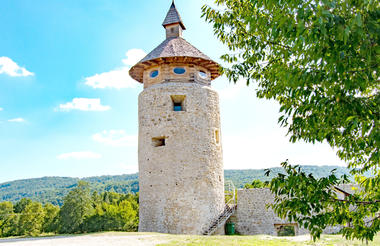
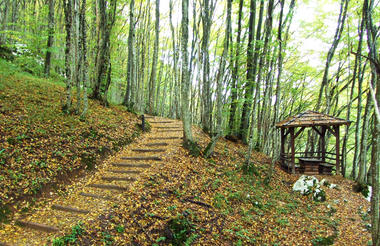
Split, the second largest town on Croatia’s Dalmatian Coast, is famed for its exquisite beaches and the fortress-like complex at its centre - Diocletian's Palace, erected by the Roman emperor in the 4th century. Once home to thousands, this sprawling UNESCO World Heritage site is encircled by white stone walls and contains some lovely courtyards lined with an array of galleries, shops, bars, cafes, cathedrals, and several historical houses. Add to this an impressive backdrop of dramatic coastal mountains and the glistening waters of the Adriatic, and it is not difficult to see why the locals frequently claim that theirs is, "The most beautiful city in the world".



Dubrovnik is a well-preserved historical city in southern Croatia, known for its distinctive 16th century Old Town, encircled with massive stone walls. After a disastrous earthquake in 1667, the medieval town was rebuilt by Baroque planners and the city’s historic core seems to have been suspended in time ever since. Set-piece churches and public buildings blend seamlessly with green-shuttered stone houses, forming a perfect ensemble relatively untouched by the twenty-first century. Its impressive buildings range from the Baroque St. Blaise Church to the Renaissance Sponza Palace and the Gothic Rector’s Palace, which is now a history museum. Add to this a few exquisitely manicured gardens and some panoramic views of the Adriatic, and it is not difficult to see why Dubrovnik has long been Croatia’s most popular tourist destination.



As previously described







